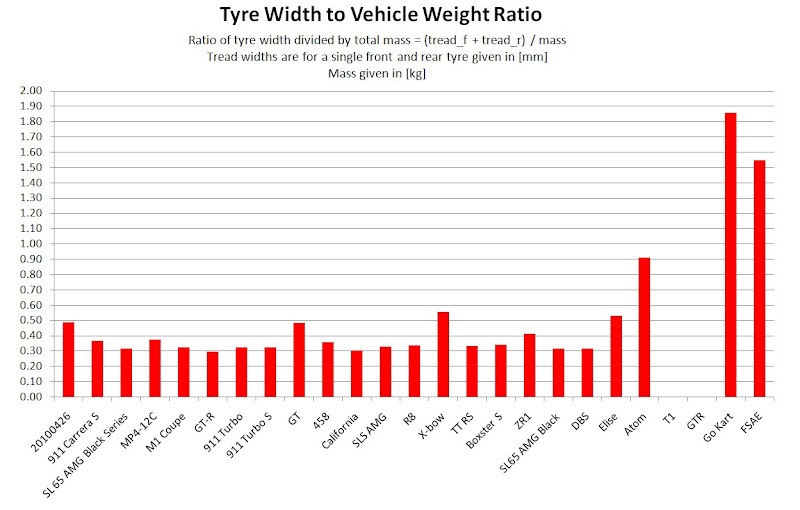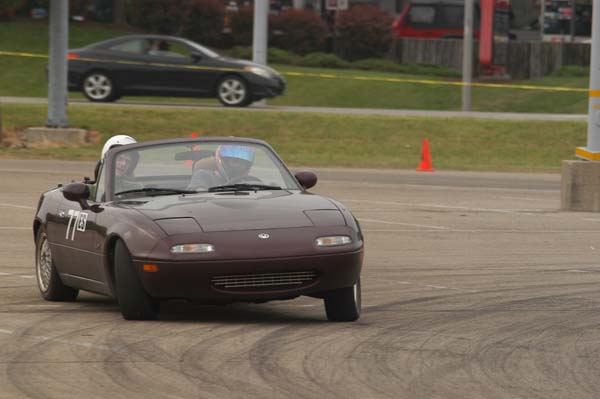I wouldn't agree with that at all. The reason a low CG gives better grip is that is reduces load transfer and load transfer reduces the available grip by a few percent due to tyre load sensitivity. Now consider the fact that karts have a geometrically imposed, 100% load transfer on the rear axle and you will see that the all the advantages of a low CG are effectively thrown away by having to lift the inside rear wheel.Ciro Pabón wrote:The main reason why karts have such good times around tracks and such a high grip is very simple and nobody has mentioned it: karts have a very low CG. This means that the transfer of weight is very low compared with a car. A kart runs at centimeters from the ground.
I was working on a tyre spreadsheet which I'm using for my own project yeterday. I have a table of vehicle mass and tyre information which I'm using to get a feel for how much tyre (width specifically) is used for a given car mass by all the large manufacturers. I decided to add a Kart and an FSAE entry in there, the results are pretty conclusive:

This is why karts are able to corner so hard. There is simply so much more contact patch area per kg of vehicle mass compared to any road going vehicle.
To be fair, I have only used tyre tread width as a measure of contact patch area so this is nothing more than an indication but a pretty strong one at that.




